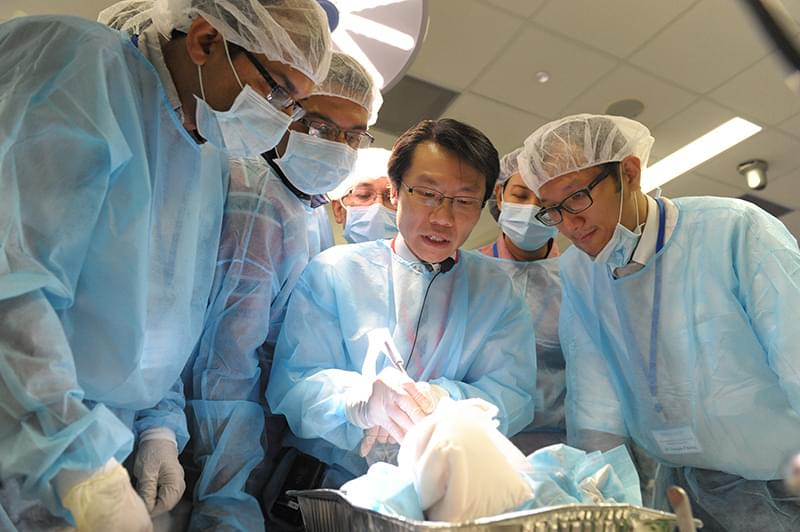What is a Sleep Test?
by Dr Kenny Pang

Here’s a look at different sleep assessment tests available.
After going through the patient’s medical history and conducting a clinical examination, a sleep specialist may also order a sleep assessment test, which helps diagnose sleep disorder(s) in a person.
There are two main types of sleep assessment tests:
- An in-hospital overnight sleep test (in-patient)
- An at-home overnight sleep test (done in the patient’s home).
Sleep tests are ordered based on the type of sleep disorder a person is suspected to have. Sleep tests measure various parameters.
Overnight Hospital Sleep Test
The in-hospital overnight attended sleep test is one that is monitored by a sleep technician throughout the night. It comprises multiple parameters, including:
- Electroencephalogram (EEG) — monitoring brain waves
- Electrooculogram (EOG) — monitoring eye movements
- Electromyogram (EMG) — monitoring muscle tone in the chin
- Electrocardiogram (ECG) — monitoring of heart muscle electrical activity
- Nasal/Oral Airflow — using the requisite thermistor or pressure transducer in the nose and mouth
- Respiratory Effort — monitoring of chest and abdominal movements and effort
- Oxygen Saturation — monitoring of the amount of oxygen in the blood
- Body Position — surveillance of the patient’s sleeping position
- Video monitoring system — general monitoring of the patient during the entire night’s sleep
With these parameters, the sleep specialist would be able to determine the patient’s sleep stages (dream sleep versus non-dream sleep), breathing cessation episodes, and whether there are signs of prolonged chest and abdominal effort in breathing.
Apnea (also spelt as apnoea) is defined as breathing stoppage for a duration of more than 10 seconds. It is considered obstructive if there is some form of obstruction in a person’s upper airway.
In Obstructive Sleep Apnea (OSA), there are stoppages in breathing of any duration, and the person might experience difficulty in breathing during sleep and will require persistent effort to breathe, especially when supine.
In central apnea, a person would experience breathing stoppage, and, as the brain does not efficiently send signals to the chest and abdominal muscles, a sufferer, in a sense, “forgets” to breathe.
Home-Based Overnight Sleep Test
A number of home-based overnight sleep tests designed to assess the severity of obstructive sleep apnea (OSA) has emerged. Done in the patient’s own home, such tests serve to aid the doctor in decision-making, while minimising the inconvenience to the patient.
An example would be the wrist-worn device known as the Watch PAT, which has been used to detect obstructive sleep apnea (OSA). The PAT (peripheral arterial tonometry) technology is a unique and relatively new concept of non-invasive measurement of stress levels that appears to be very accurate for detecting apneic events during sleep.
The Watch PAT is a self-contained device worn around the wrist. It is lightweight and silent, easy-to-use, portable, and accurate, which is essential for a practical ambulatory device. Two finger probes extend from the main body of the device. One is the optico-pneumatic (light and pressure) sensor that detects the peripheral arterial tonometry (PAT) signal (stress level in the finger); the other measures arterial oxygen saturation (amount of oxygen in the blood). The body of the device also contains an actigraph (that measures and detects muscle tension and tone), which is used to differentiate sleep stages from wakefulness.
Simplistically speaking, the Watch PAT looks at any desaturation in oxygen level in the blood and correlates this with the arterial tone in the finger probe.
- Low Oxygen level + no stress in the finger tone = central apnea event
- Low Oxygen level + high stress in the finger tone = obstructive sleep apnea event
As discrete obstructive airway events (stoppages in breathing) cause stress to the heart, lungs and brain, they increase arousal from sleep, stress activation, and hence, these events would significantly raise peripheral arterial tone (finger tone) signal.
